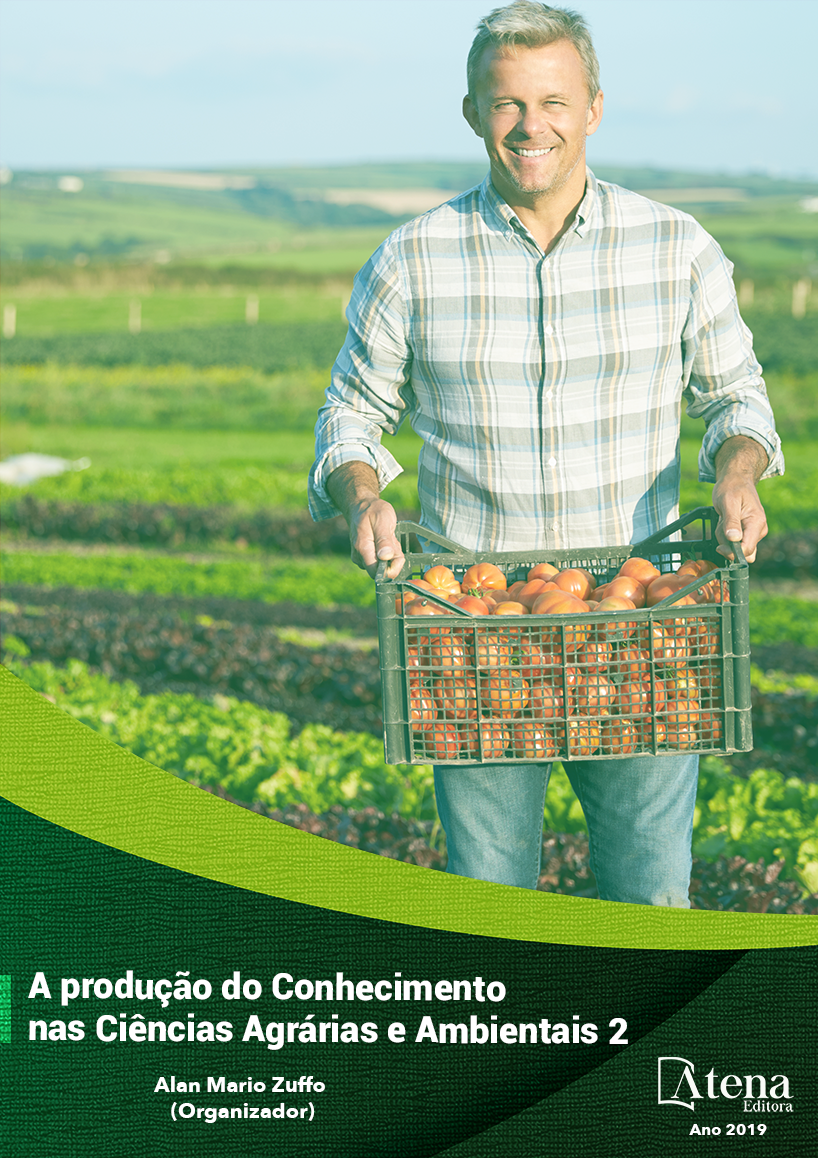
DIGESTIBILIDADE IN VITRO DE SILAGEM DE BAGAÇO DE SORGO SACARINO
O objetivo foi avaliar diferentes genótipos de sorgo sacarino e os aspectos
digestivos dos seus bagaços na forma de alimento conservado, relacionado à
digestibilidade in vitro da matéria seca (DIGIV). O experimento foi conduzido no
câmpus da UTFPR em Dois Vizinhos-PR. O primeiro ensaio foi estabelecido no dia
02 de outubro de 2012 usando os genótipos ADV 2010, Hunnigreen, Sugargraze,
Volumax, BR 505, 503, 501 e o segundo em 2013 no dia 27 de novembro avaliando
os materiais ADV 2010, Sugargraze, Hunnigreen, EX 5110, BR 506, 508, 509 e 511. A
digestibilidade in vitro da matéria seca foi avaliada através do método de Baumgardt et
al (1962), adaptada por Tilley & Terry (1963). O delineamento experimental empregado
foi o de blocos ao acaso com três repetições, analisando os resultados por meio da
ANOVA e comparando as médias pelo teste de Duncan a 5% de probabilidade de
erro. A digestibilidade in vitro foi em média geral de 36,9% e 62,4% para a silagem do
bagaço dos materiais cultivados nas safras 2012/2013 e 2013/2014, respectivamente.
De modo geral, o maior rendimento agronômico, seja por genética ou por fatores
ambientais, proporcionou menor digestibilidade. Maior rendimento agronômico de
sorgo sacarino é responsável por uma menor digestibilidade da silagem do bagaço
do mesmo, digestibilidade a qual é influenciada por fatores ambientais e genéticos. A
silagem de bagaço de sorgo sacarino é
DIGESTIBILIDADE IN VITRO DE SILAGEM DE BAGAÇO DE SORGO SACARINO
-
DOI: 10.22533/at.ed.85219260427
-
Palavras-chave: Nutrição animal. Plantas forrageiras. Resíduo vegetal. Sorghum bicolor L.
-
Keywords: Animal nutrition. Forage plants. Plant residue. Sorghum bicolor L.
-
Abstract:
The objective was to evaluate different genotypes of sweet sorghum and
the digestive aspects of their bagasse in the form of preserved food, related to in vitro
dry matter digestibility (DIGIV). The experiment was conducted at the UTFPR campus
in Dois Vizinhos-PR. The first trial was established on October 2, 2012 using ADV
2010, Hunnigreen, Sugargraze, Volumax, BR 505, 503, 501 genotypes and the second
in 2013 on November 27 evaluating materials ADV 2010, Sugargraze, Hunnigreen,
EX 5110, BR 506, 508, 509 and 511. The in vitro dry matter digestibility was evaluated
by the method of Baumgardt et al (1962), adapted by Tilley & Terry (1963). The
experimental design was a randomized block design with three replicates, analyzing
the results using ANOVA and comparing the means by the Duncan test with a 5%
probability of error. In vitro digestibility was in general average of 36.9% and 62.4%
for bagasse silage of the materials grown in the 2012/2013 and 2013/2014 harvests,
respectively. In general, the higher agronomic yield, either by genetic or environmental
factors, provided fewer digestibilities. Higher agronomic yield of sweet sorghum is
responsible for lower digestibility of bagasse silage, digestibility which is influenced by
environmental and genetic factors. Sweet sorghum bagasse silage is viable for animal
feed and as a way of reducing environmental impacts
-
Número de páginas: 15
- Jean Carlo Possenti
- Edison Antonio Pin
- André Brugnara Soares
- Anderson Camargo de Lima
- Márcia Mensor
- Bruno Alcides Hammes Schumalz
- Wilson Henrique Tatto
- Ricardo Beffart Aiolfi
- Luryan Tairini Kagimura
- Rui Alberto Picolotto Junior
- Angela Carolina Boaretto
- Jessica Maiara Nemirscki
- Felipe Candiotto
- Cleiton Rafael Zanella
- Angélica Caroline Zatta
- Lucas Candiotto


